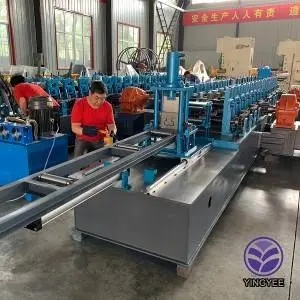
Understanding PU Sandwich Panel Lines Efficient Production for Modern Needs
In the construction and manufacturing sectors, the demand for lightweight, energy-efficient, and durable materials is on the rise. One such innovative solution is the PU (Polyurethane) sandwich panel, renowned for its excellent thermal insulation properties and versatile application in various industries, including commercial and residential buildings. The technology behind the production of PU sandwich panels has evolved significantly, with dedicated machinery and automated lines enhancing efficiency and quality. This article delves into the intricacies of a PU sandwich panel line, exploring its components, processes, and benefits.
A typical PU sandwich panel line comprises several key components, each playing a crucial role in the manufacturing process. At the outset, raw materials—primarily steel sheets and polyurethane foam—are prepared. The steel sheets serve as the outer skins of the panels, providing structural integrity and resistance to environmental factors, while the PU foam, which is injected between the metal layers, offers superior thermal insulation.
Understanding PU Sandwich Panel Lines Efficient Production for Modern Needs
Next, the core injection phase takes place. Here, high-performance machinery is used to inject liquid polyurethane between the two steel sheets. This step requires meticulous control over the mixing and curing processes to ensure optimal density and thermal performance of the finished panels. The curing process is vital, as it determines the structural and thermal qualities of the final product.

Once the polyurethane has cured, the panels are cut to the desired lengths and undergo final inspections to maintain quality standards. Advanced quality control systems are integrated into the production line to monitor each stage of the manufacturing process, ensuring that only products that meet rigorous specifications proceed to the packaging and shipping phases.
The advantages of using a PU sandwich panel line are manifold. Firstly, the panels produced are lightweight yet strong, offering excellent load-bearing capabilities while minimizing transportation costs. Additionally, their superior insulation properties contribute to energy efficiency in buildings, leading to reduced heating and cooling expenses—a critical factor in today’s environmentally conscious market.
Moreover, the automation of the production line minimizes labor costs and increases the speed of manufacturing, allowing suppliers to meet high demand without compromising quality. The versatility of PU sandwich panels also makes them suitable for a wide range of applications, from cold storage facilities and industrial buildings to residential homes.
In conclusion, the PU sandwich panel line is a testament to modern engineering advancements, providing an efficient and effective solution for contemporary construction needs. With its array of benefits, including energy efficiency, strength, and versatility, the PU sandwich panel has established itself as a preferred choice in the building materials market. As demand continues to grow, the role of these production lines will undoubtedly expand, shaping the future of construction materials.